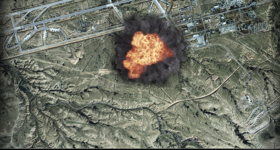Medication questions about troops…
by Martha Rosenberg
OpEd News
Why does the suicide rate among military personnel continue to climb–even among those who never saw combat? This week the Pentagon announced there were more suicides among active-duty members of the armed services in 2012 than combat deaths – a staggering 349. Eighty-five percent had not even seen combat, reported Bloomberg.
 The suicide rate rose similarly last year and also included troops who had not faced combat. There were 38 Army suicides in July of 2012 compared with 32 suicides in July of 2011 . In a 2010 Army report called Health Promotion, Risk Reduction and Suicide Prevention Report, 36 percent of the troops who killed themselves had never even deployed. The suicide rate increased by more than 150 percent in the Army and more than 50 percent in the Marine Corps between 2001 to 2009, reported Military Times in a series of in-depth articles.
The suicide rate rose similarly last year and also included troops who had not faced combat. There were 38 Army suicides in July of 2012 compared with 32 suicides in July of 2011 . In a 2010 Army report called Health Promotion, Risk Reduction and Suicide Prevention Report, 36 percent of the troops who killed themselves had never even deployed. The suicide rate increased by more than 150 percent in the Army and more than 50 percent in the Marine Corps between 2001 to 2009, reported Military Times in a series of in-depth articles.
One in six service members was on a psychoactive drug in 2010 and “many troops are taking more than one kind, mixing several pills in daily ‘cocktails’ for example, an antidepressant with an antipsychotic to prevent nightmares, plus an anti-epileptic to reduce headaches–despite minimal clinical research testing such combinations,” said Military Times.
The pills and pill cocktails many troops are prescribed are clearly linked to suicidal thoughts and behavior. Antidepressants like Prozac and Paxil, antipsychotics like Seroquel and Zyprexa and anti-seizure drugs like Lyrica and Neurontin all carry clear suicide warnings and all are widely used in the military. Almost 5,000 newspaper reports link antidepressants to suicide, homicide and bizarre behavior on the website www.SSRIstories.com . The malaria drug Lariam is also highly correlated with suicide and its use actually increased in the Navy and Marine Corps in 2011, according to the Associated Press.
Eighty-nine percent of troops with post traumatic stress disorder (PTSD) are now given psychoactive drugs and between 2005 and 2009, half of all TRICARE (the military health plan) prescriptions for people between 18 and 34 were for antidepressants. During the same time period, epilepsy drugs like Topamax and Neurontin, increasingly given off-label for mental conditions, increased 56 percent, reports Military Times . In 2008 , 578,000 epilepsy pills and 89,000 antipsychotics were prescribed to deploying troops.
Both the increase in the overall suicide rate in the US (rising to 36,000 a year after falling in the 1990s according to USA Today) and in the military coincide with the debut of direct-to-consumer drug advertising in the late 1990s. They are also correlated with the FDA’s approval of many drugs with suicide links and a population that is increasingly taking psychoactive drugs for minor problems and symptoms. Several powerful military psychiatrists and administrators are also consultants to Big Pharma who shamelessly enroll veterans in drug studies and promote the pills that drug companies pay them to promote. Who can say conflict of interest?
When concerns about the rise in the general suicide rate in the US surfaced last fall, US Surgeon General Regina Benjamin announced federal grants for suicide hotlines, more mental health workers, better depression screening and Facebook tracking of suicidal messages. Nowhere, did she mention examining the role of suicide-linked drugs on, ahem, suicide. The Pentagon is apparently in similar denial.
****
More information about overmedication of troops and suicide-linked drugs is found in Martha Rosenberg’s recently published Born With a Junk Food Deficiency: How Flaks, Quacks and Hacks Pimp The Public Health.















